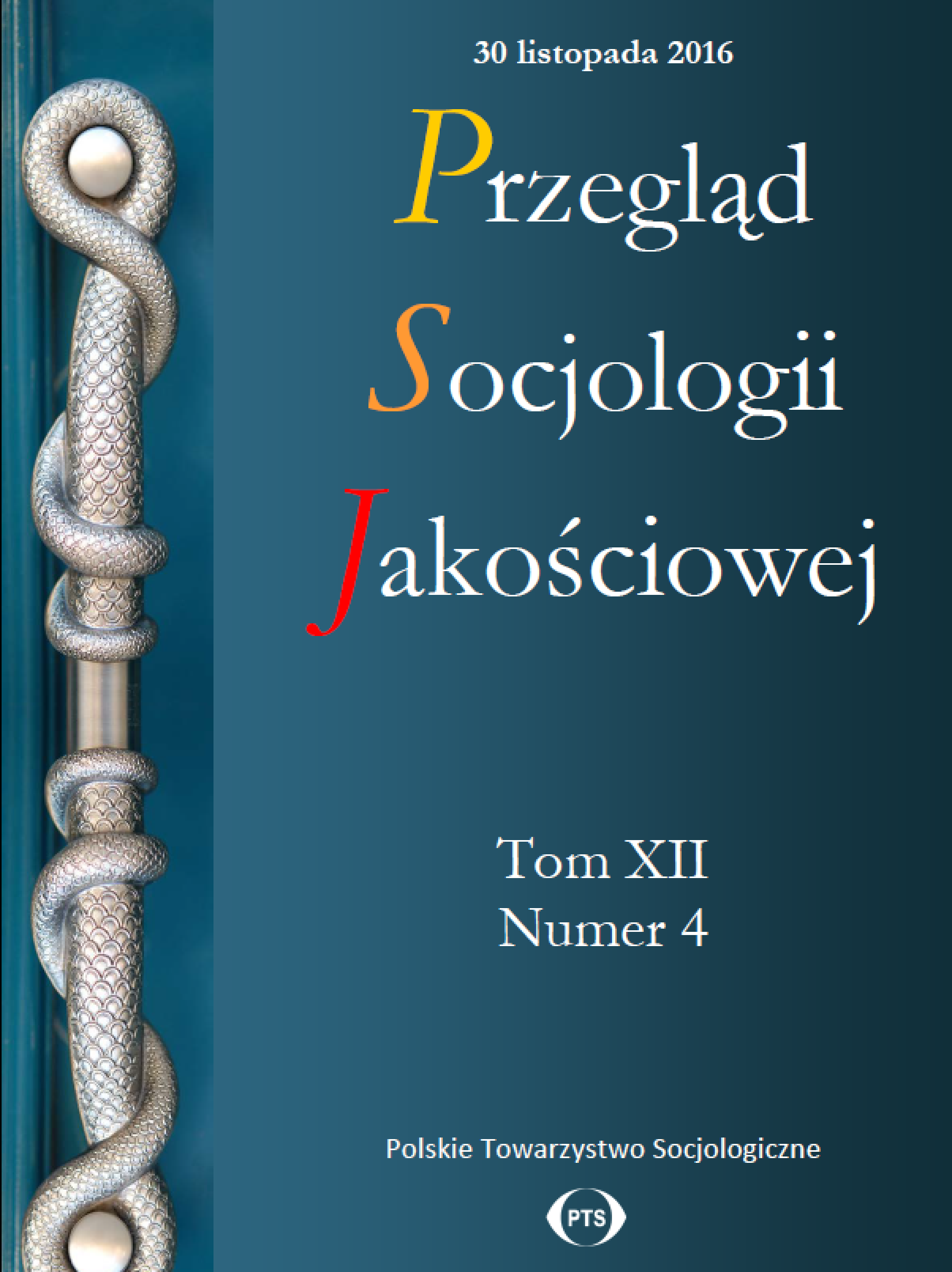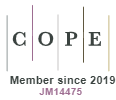“Legless Aphrodite” and “Hercules in a wheelchair”—About Disabled Women and Disabled Men Practicing Sport
DOI:
https://doi.org/10.18778/1733-8069.12.4.08Keywords:
Disability, Sport, Body, Sex, Femininity and Masculinity PatternsAbstract
Sport is one of the areas of social life where patterns of femininity and masculinity are defined. The body plays a basic role there, and competition almost always takes place with division into the sexes. Therefore, in the article I will raise the notions related to the non-standard bodies of a sportsman presented in the social space, with consideration of the division into the sexes. The sport body is a subject of interest as a product of socio-cultural practices. Hence, special attention is paid to the creation of particular categories and the relationships between them.
The article raises the notions of changes that take place in the life of a physically disabled person which are caused by their engagement in a sports activity. The text is devoted to the problems of experiencing one’s corporeality, with division into the female and male body, and it serves to expose the similarities and differences of the sexes in sport for the disabled.
Qualitative data are used in the research, collected through the technique of in-depth free interviews and observations conducted among the disabled who practice sports. Analysis and interpretation of the research material is performed in accordance with procedures of grounded theory.
Downloads
References
Bauman, Zygmunt. 2012. Ciało i przemoc w obliczu ponowoczesności. Torun: Wydawnictwo Naukowe UMK.
Google Scholar
Bem, Sandra L. 2000. Męskość kobiecość. O różnicach wynikających z płci. Translated by Sylwia Pikiel. Gdańsk: GWP.
Google Scholar
Biały, Rafał. 2011. “Ideał szczupłego i atrakcyjnego ciała w kulturze masowej.” Pp. 267-278 in Kultura fizyczna a kultura masowa, edited by Zbigniew Dziubiński, Michał Lenartowicz. Warsaw: AWF J. Piłsudskiego w Warszawie, SALOS RP.
Google Scholar
Bourdieu, Pierre. 2005. Dystynkcja. Translated by Piotr Biłos. Warsaw: Wydawnictwo Naukowe Scholar.
Google Scholar
Bourdieu, Pierre. 2004. Męska dominacja. Translated by Lucyna Kopciewicz. Warsaw: Oficyna Wydawnicza.
Google Scholar
Brittain, Ian. 2012. From Stoke Mandeville to Stratford: A History of the Summer Paralympic Games. Champaign, IL: Common Ground Publishing.
Google Scholar
Cynarski, Wojciech J. 2011. “Samoidentyfikacja przez cielesność w dzisiejszej kulturze masowej.” Pp. 199-208 in Kulturze fizyczna a kultura masowa, edited by Zbigniew Dziubiński, Michał Lenartowicz. Warsaw: AWF J. Piłsudskiego w Warszawie, SALOS RP.
Google Scholar
Douglas, Mary. 2007. Czystość i zmaza. Translated by Marta Bucholc. Warsaw: PIW.
Google Scholar
Gill, Diane L. 2007. “Gender and Cultural Diversity.” Pp. in Handbook of Psychology, edited by Gershon Tanenbaum. New York: Wiley.
Google Scholar
DOI: https://doi.org/10.1002/9781118270011.ch37
Glaser, Barney and Anselsm Strauss. 1967. The Discovery of Grounded Theory. Strategies for Qualitative Research. Chicago: Aldine Publishing Company.
Google Scholar
Goffman, Erving. 2005. Piętno. Rozważania o zranionej tożsamości. Translated by Aleksandra Dzierżyński, Joanna Tokarska-Bakir. Gdansk: Gdańskie Wydawnictwo Psychologiczne.
Google Scholar
Golczyńska-Grondas, Agnieszka. 2014. Wychowało nas państwo. Recz o tożsamości wychowanków placówek opiekuńczo-wychowaczych. Cracow: Zakład Wydawniczy Nomos.
Google Scholar
Habermas, Jurgen. 2003. Przyszłość natury ludzkiej: czy zmierzamy do eugeniki liberalnej? Translated by Małgorzata Łukasiewicz. Warsaw: Wydawnictwo Naukowe Scholar.
Google Scholar
Hall, Ann. 2002. “The Discourse of Gender and Sport: From Femininity to Feminism.” Pp. 6-17 in Gender and Sport. A Reader, edited by Sheila Scraton, Anne Flintoff. London, New York: Routledge.
Google Scholar
Hall, Ann. 1994. Feminism and Sporting Bodies. Champaign: Human Kinetics Press.
Google Scholar
Hammersley, Martyn and Paul Atkinson. 2000. Metody badań terenowych. Translated by Sławomir Dymczyk. Poznan: Wydawnictwo Zysk i S-ka.
Google Scholar
Hernik, Kamila. 2007. “Doświadczenie konwersji przez studentów Wydziału Aktorskiego Akademii Teatralnej w Warszawie.” Przegląd Socjologii Jakościowej 3(3):1-122. Retrieved March 17, 2016 (http:// www.qualitativesociologyreview.org/PL/volume5_pl.php).
Google Scholar
DOI: https://doi.org/10.18778/1733-8069.3.3.02
Howe, P. David. 2011. “Cyborg and Supercrip: The Paralympics Technology and the (Dis)Empowerment of Disabled Athletes.” Sociology 45(5):868-882.
Google Scholar
DOI: https://doi.org/10.1177/0038038511413421
Jakubowska, Honorata. 2014. Gra ciałem. Praktyki i dyskursy różnicowania płci w sporcie. Warsaw: Wydawnictwo Naukowe PWN.
Google Scholar
Jakubowska, Honorata. 2013. “Płciowe porządki – granice płci w sporcie według koncepcji Mary Douglas.” Człowiek i Społeczeństwo XXXVI(1):113-127.
Google Scholar
Jakubowska, Honorata. 2009. Socjologia ciała. Poznan: Wydawnictwo Naukowe UAM.
Google Scholar
Jakubowska, Honorata. 2008. “Ciało biologiczne w interakcjach społecznych: pomiędzy napiętnowaniem a akceptacją.” Kultura i Społeczeństwo 3:195-213.
Google Scholar
DOI: https://doi.org/10.35757/KiS.2008.52.3.11
Jankowski, Krzysztof W. 2013. „Sport a zasada równych szans.” Pp. 79-85 in Kultura fizyczna a różnice i nierówności społeczne, edited by Zbigniew Dziubiński. Warsaw: SALOS RP, AWF w Warszawie.
Google Scholar
Konecki, Krzysztof. 2000. Studia z metodologii badań jakościowych. Teoria ugruntowana. Warsaw: Wydawnictwo Naukowe PWN.
Google Scholar
Kowalik, Stanisław and Magdalena Miotk-Mrozowska. 2013. “Sport paraolimpijski a rozwój osób niepełnosprawnych.” Pp. 7-28 in Idee olimpijskie a kierunki rozwoju sportu osób niepełnosprawnych, edited by Maciej Wilski, Jarosław Gabryelski. Poznan: AWF w Poznaniu.
Google Scholar
Lenskyj, Helen. 2003. Out on the Field. Gender, Sport and Sexualities. Tornoto: Women’s Press.
Google Scholar
Mazur, Zuzanna. 2013. “Zróżnicowania i nierówności płciowe w sporcie.” Pp. 165-175 in Kultura fizyczna a różnice i nierówności społeczne, edited by Zbigniew Dziubiński, Michał Lenartowicz. Warsaw: AWF J. Piłsudskiego w Warszawie, SALOS RP.
Google Scholar
Melchior, Małgorzata. 1990. Społeczna tożsamość jednostki (w świetle wywiadów z Polakami żydowskiego pochodzenia urodzonymi w latach 1944-1955). Warsaw: Uniwersytet Warszawski ISNS.
Google Scholar
Mikołajczyk, Maria. 2004. “Sport i płeć a jakość życia.” Psychologia Jakości Życia 3(1):99-122.
Google Scholar
Organista, Natalia. 2013. “Nierówności płciowe w kulturze fizycznej na przykładzie organizacji sportowych.” Pp. 177-186 in Kultura fizyczna a różnice i nierówności społeczne, edited by Zbigniew Dziubiński, Michał Lenartowicz. Warsaw: AWF J. Piłsudskiego w Warszawie, SALOS RP.
Google Scholar
Rubin, Herbert J. and Irene S. Rubin. 1997. “Jak zmierzać do celu nie wiążąc sobie rąk. Projektowanie wywiadów jakościowych.” Pp. 201-224 in Ewaluacja w edukacji, edited by Leszek Korporowicz. Warsaw: Oficyna Naukowa.
Google Scholar
Rymarczyk, Piotr. 2012. “Kultura fizyczna w społeczeństwie nowoczesnym.” Pp. 108-120 in Socjologia kultury fizycznej, edited by Zbigniew Dziubiński, Zbigniew Krawczyk. Warsaw: Wydawnictwo AWF J. Piłsudskiego w Warszawie.
Google Scholar
Schneider, Manfred. 2003. “Erotyka sportu telewizyjnego. Uwagi na temat liturgii heroizmu na co dzień.” Pp. 79-94 in Media – eros – przemoc. Sport w czasach popkultury, edited by Andrzej Gwóźdź. Cracow: Universitas.
Google Scholar
Young, Iris M. 1990a. Justice and the Politics of Difference. Princeton: University of Princeton Press.
Google Scholar
Young, Iris M. 1990b. Throwing Like a Girl, and Other Essays in Feminist Philosophy and Social Theory. Bloomington: University of Indiana Press.
Google Scholar
Wyka, Anna. 1993. Badacz społeczny wobec doświadczenia. Warsaw: PWN.
Google Scholar
Zdebska, Halina. 2013. “Wybrane uwarunkowania społeczne sportu kobiet.” Pp. 155-163 in Kultura fizyczna a różnice i nierówności społeczne, edited by Zbigniew Dziubiński, Michał Lenartowicz. Warsaw: AWF J. Piłsudskiego w Warszawie, SALOS RP.
Google Scholar
Downloads
Published
How to Cite
Issue
Section
License

This work is licensed under a Creative Commons Attribution-NonCommercial-NoDerivatives 4.0 International License.














